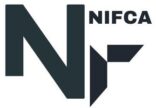Agree: Fastening components are essential to ensuring the stability and strength of mechanical assemblies. Choosing the right standard and material for double-ended studs is essential to their dependability and lifespan.
Promise: In this article, we will go into great detail about DIN 938 M10x40 A2-70 L2A’s design, material properties, and best-use scenarios.
Preview: We will look into the reasoning behind each part of this specification, discuss its advantages in a number of areas, provide guidance on proper installation, analyze mechanical behavior under stress, and compare it to alternative fastening techniques. By the conclusion, you will understand why this stud is a popular choice among engineers.
Breakdown of Specification
DIN 938 – Standard Overview
DIN 938 is the German Industrial Standard for studs that have two ends and one side with a longer thread than the other. These studs are typically used in bolted connections, which have a nut on both sides.
Primary function: Provide secure and reversible fastening for applications requiring disassembly.
Usage: Frequently found in engineering, automotive, and mechanical construction applications.
Manufacturing tolerance: Adheres to strict metric precision guidelines for interchangeability.
M10 – Thread Size and Pitch
- M10 denotes a metric thread with a nominal diameter of 10 mm.
- The standard pitch for M10 threads is 1.5 mm, unless otherwise specified.
- Thread depth and engagement: Designed for optimal grip strength in mechanical assemblies.
40 mm – Stud Length
- The total length of the stud is 40 mm.
- The division of thread lengths is specified to ensure proper load distribution.
- Longer threaded end is designed for enhanced grip when fastening.
A2-70 – Material and Strength Class
- A2 refers to stainless steel (AISI 304 equivalent), known for its corrosion resistance, oxidation protection, and non-magnetic properties.
- 70 represents a tensile strength of 700 N/mm², which makes it suitable for moderate to high-stress environments.
- Hardness and ductility: Maintains balance between hardness and flexibility, reducing risk of brittle failure.
L2A – Additional Marking
- “L2A” could indicate a manufacturer’s specification, advanced surface finish, or tolerance classification.
- It may also relate to batch identification, quality assurance markings, or plating details.
Technical Specifications
| Property | Specification |
|---|---|
| Standard | DIN 938 |
| Thread Size | M10 |
| Total Length | 40 mm |
| Material | Stainless Steel A2 (AISI 304) |
| Strength Class | 70 (700 N/mm²) |
| Corrosion Resistance | High (suitable for outdoor and industrial use) |
| Thread Type | Metric, Partially Threaded |
| Temperature Resistance | Up to 870°C (for stainless steel A2) |
Material Properties and Corrosion Resistance
- Stainless Steel A2 provides good corrosion resistance, making it ideal for moist, acidic, and alkaline environments.
- Resistance against stress corrosion cracking (SCC) enhances performance under cyclic loading.
- Non-magnetic behavior makes it ideal for applications requiring low magnetic permeability.
- Comparative strength vs. Carbon Steel: While A2-70 has lower strength than high-tensile carbon steel, its superior corrosion resistance compensates for longevity in harsh environments.
Applications and Use Cases
Common Industries
Automotive: Used in engine assemblies, exhaust systems, and suspension components.
Construction: Ideal for securing steel frameworks and reinforcement structures.
Machinery & Equipment: Frequently used in precision machine parts requiring removability.
Marine & Chemical Processing: Resistant to seawater and chemical exposure, making it useful in shipbuilding and chemical plants.
Typical Installation Scenarios
- Connecting two components where regular disassembly is necessary.
- Used in high-vibration environments requiring secure fastening.
- Essential for load-bearing joints where mechanical stress is a concern.
Alternatives and Comparisons
Other DIN Standards for Double-Ended Studs
- DIN 939 – Equal thread lengths on both sides, used for balanced load distribution.
- DIN 835 – Fully threaded double-ended stud for flexible installation.
- DIN 976 – Continuously threaded rod offering variable length cutting options.
Alternative Materials and Strength Classes
- A4-80 – Higher corrosion resistance (AISI 316 stainless steel) with superior tensile strength.
- Class 8.8 or 10.9 Carbon Steel – High mechanical strength but prone to oxidation.
Procurement and Quality Considerations
Sourcing and Supplier Standards
- Ensure suppliers comply with ISO 898 (for strength) and ISO 3506 (for stainless steel fasteners).
- Check for certifications like DIN, EN, and ASTM compliance.
Quality Control Checks
- Verify thread accuracy with gauge testing.
- Conduct material analysis for stainless steel authenticity.
- Ensure proper labeling for traceability.
Installation and Best Practices
Recommended Torque Values
- M10 A2-70 studs should be tightened to 25-30 Nm (Newton-meters) in standard conditions.
- Avoid excessive torque to prevent thread stripping or stud breakage.
Proper Installation Techniques
Clean the threads to remove debris and ensure a snug fit.
Apply anti-seize lubricant to prevent galling in stainless steel.
Use a torque wrench to apply the recommended force precisely.
Compatibility with Nuts and Washers
- Pair with DIN 934 nuts for secure fastening.
- Use DIN 125 washers for even load distribution and vibration damping.
Conclusion ( DIN 938 M10x40 A2-70 L2A )
A very versatile and sturdy fastening element, the DIN 938 M10x40 A2-70 L2A stud is ideal for applications needing mechanical strength, precision, and resistance to corrosion. Its longevity is guaranteed by its stainless steel construction, and mechanical assembly reliability is ensured by the DIN 938 standard. Understanding its features, applications, and best practices aids engineers and procurement specialists in selecting the optimal fastening system.
ALAO READ: https://nifca.org/category/blog/

